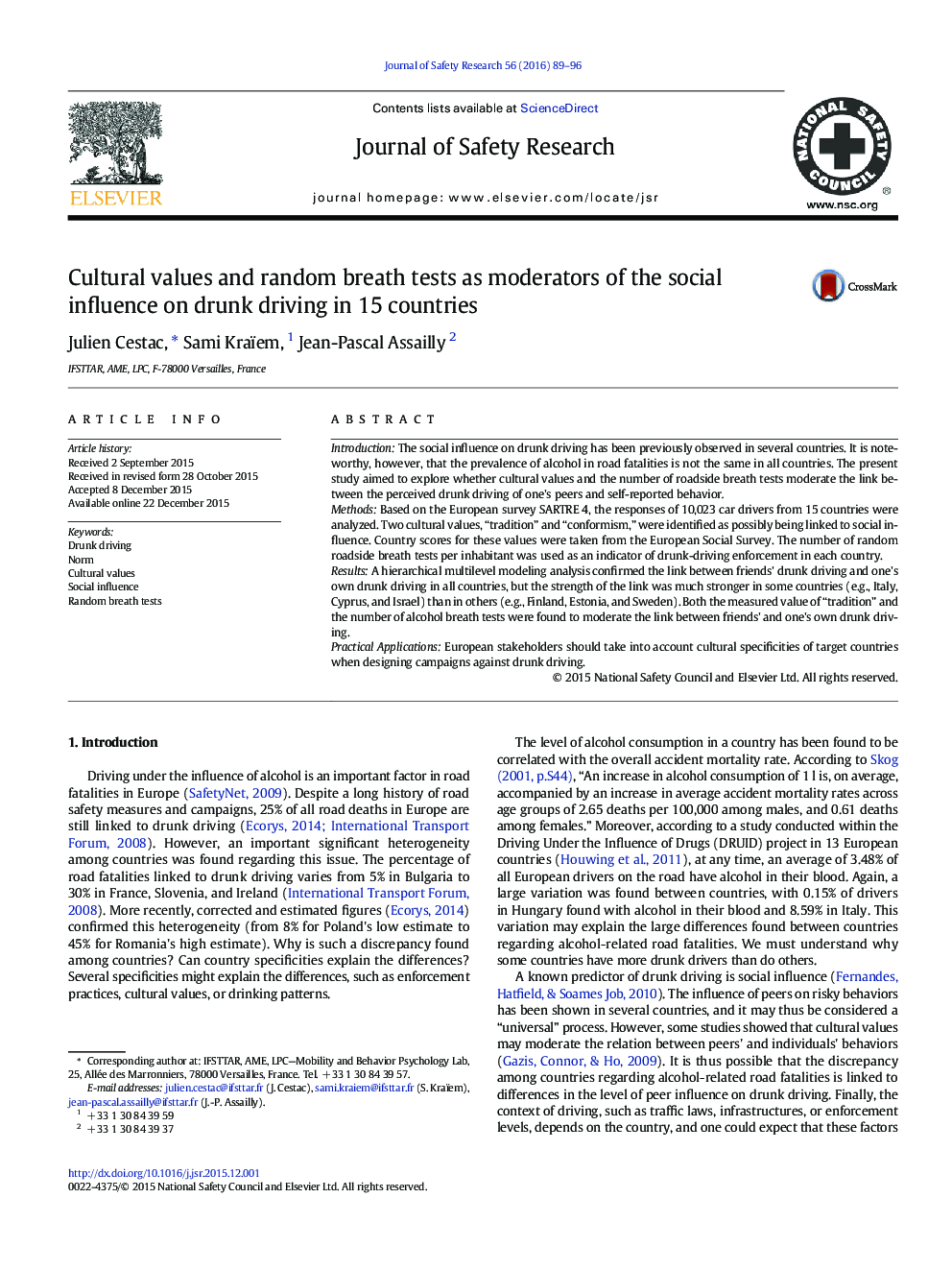| Article ID | Journal | Published Year | Pages | File Type |
|---|---|---|---|---|
| 587332 | Journal of Safety Research | 2016 | 8 Pages |
•Descriptive norms are correlated with drunk driving in 15 European countries.•The strength of the link is much stronger in Southern than in Northern European countries.•The measured value of “tradition” and the number of roadside breath tests contributed to explain country variance.•Culture and random breath tests both moderated the link between friends' and one's own drunk driving.
IntroductionThe social influence on drunk driving has been previously observed in several countries. It is noteworthy, however, that the prevalence of alcohol in road fatalities is not the same in all countries. The present study aimed to explore whether cultural values and the number of roadside breath tests moderate the link between the perceived drunk driving of one's peers and self-reported behavior.MethodsBased on the European survey SARTRE 4, the responses of 10,023 car drivers from 15 countries were analyzed. Two cultural values, “tradition” and “conformism,” were identified as possibly being linked to social influence. Country scores for these values were taken from the European Social Survey. The number of random roadside breath tests per inhabitant was used as an indicator of drunk-driving enforcement in each country.ResultsA hierarchical multilevel modeling analysis confirmed the link between friends' drunk driving and one's own drunk driving in all countries, but the strength of the link was much stronger in some countries (e.g., Italy, Cyprus, and Israel) than in others (e.g., Finland, Estonia, and Sweden). Both the measured value of “tradition” and the number of alcohol breath tests were found to moderate the link between friends' and one's own drunk driving.Practical ApplicationsEuropean stakeholders should take into account cultural specificities of target countries when designing campaigns against drunk driving.
